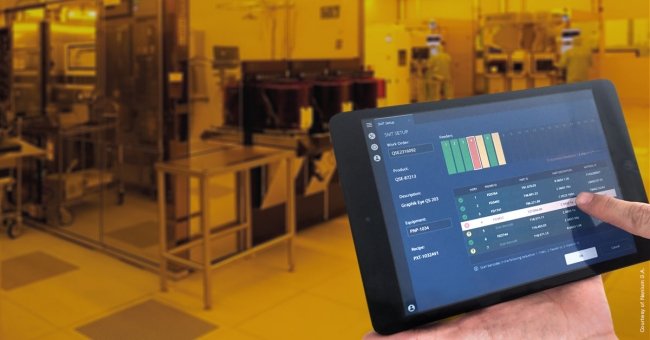The next driver - or enabler, as we refer to - would be the use of mobile devices on and off the production floor. Mobile devices have come a long way since they were first introduced and are now so much more than just basic communication tools.
Modern mobile devices are internet enabled and can both receive and process large amounts of information. What’s more, they can have applications like the MES which drive the operation in a plant installed on them as an App. Further to this, mobile devices are equipped with high quality cameras and microphones, which again allow them to record and transmit information. All this coupled with better processors, software and we have a truly capable device which, in the right hands, can mean millions of dollars in savings.
Process data on-the-go
All modern mobile devices, be it cell phones, tablets, watches or any other digital gizmo, have the ability to access the internet. We have already seen how the Internet of Things provides connectivity to all inanimate objects and allows them to communicate with each other. When mobile devices (carried by process owners, operators, trainers etc.) become internet enabled, they come to the same platform as other process equipment. Which means they can receive and transmit process related data on the go, and allow users to address issues as they unfurl in real time.
In traditional manufacturing plants, it was imperative for operators or other process owners to be available at a certain station if they wanted to access certain information. All this changes with modern mobile devices. Issues can now be recognized and dealt with faster as information moves with a higher velocity and in the right direction. The mobile devices now in use - and the future ones even more - would be able to interact with process equipment, material, finished goods and parts through the IIoT and the MES application. This would allow better execution of the process and faster corrective, preventive and containment related protocols to kick in.
Mobile means faster corrective, preventive and containment related protocols
Imagine a manufacturing plant where all workers carry company provided or personal tablets, which allows them to communicate on the go. The tablet with the company MES installed, irrespective of whether the device uses cellular or WIFI network, is connected to the internet and the MES application of the organization.
In such a plant, if a new piece of machinery is purchased or a new operator is recruited, all that needs to be done by the operator is to approach the machine and voila! the information related to operation of the machine along with its manual can be downloaded to the operator’s mobile device.
Imagine the operator gets clear instructions on how to operate the machine along with a training video, all this done automatically as the MES detects that the operator needs to be trained on the said machine. Besides providing training and operating instructions, the mobile devices will also allow users to understand the current state of the process equipment, where equipment communicates with the user’s mobile device and reports current status, as to how many units processed, current status, future maintenance scheduled and so on.
Similarly, material/parts on their way from warehouse, to being processed in the production line may also communicate with the user’s mobile devices, allowing the personnel to know and track where a particular material type is stored, to how many finished goods lie in the warehouse and where. Also, while production is underway, operators may get intimations pertaining to quality errors and using big-data analytics. They can then determine whether it is a supplier or equipment related issue.
The mobile devices can also act as generators of information. Imagine a scenario where there is a part manufactured with a defect, the mobile device can be used to make a video of the operation, take pictures of the faulty part and immediately highlight the same to the engineering department. All the communication can happen over the MES application, which would provide additional information to the concerned personnel and help faster detection of the root cause for the production of the said faulty part.
Most critical point to note here is the presence of Industry 4.0 type conditions, which enable these improvements. All devices are internet enabled and have the capability to receive, generate and process large amounts of information. All equipment/materials are equipped with smart sensors/tags which allow them to communicate over the internet. And most importantly, there is an MES application in place which allows for raw data and inputs to be received, processed and information to be passed to the right personnel, in the right format and at the right time.

